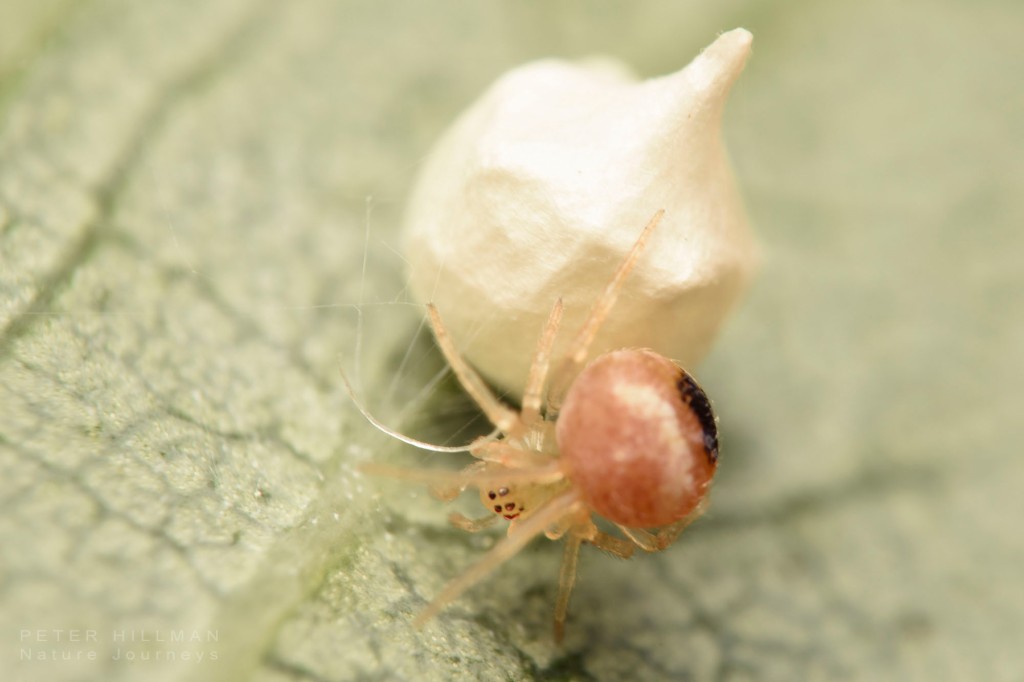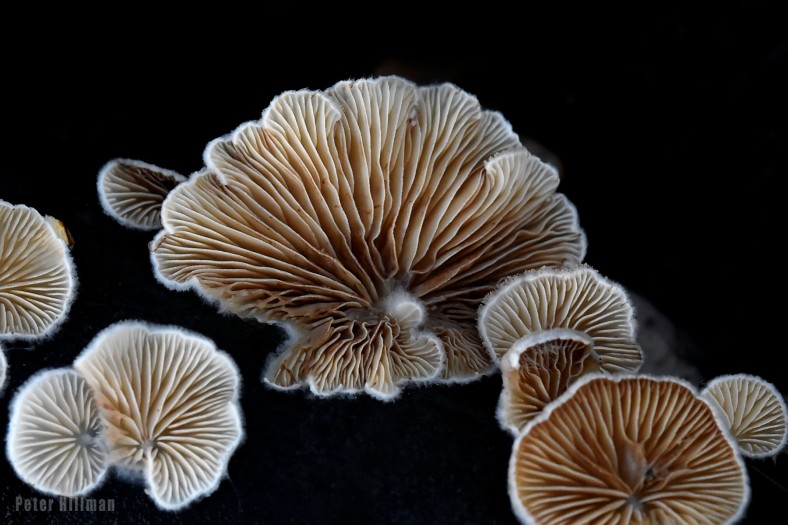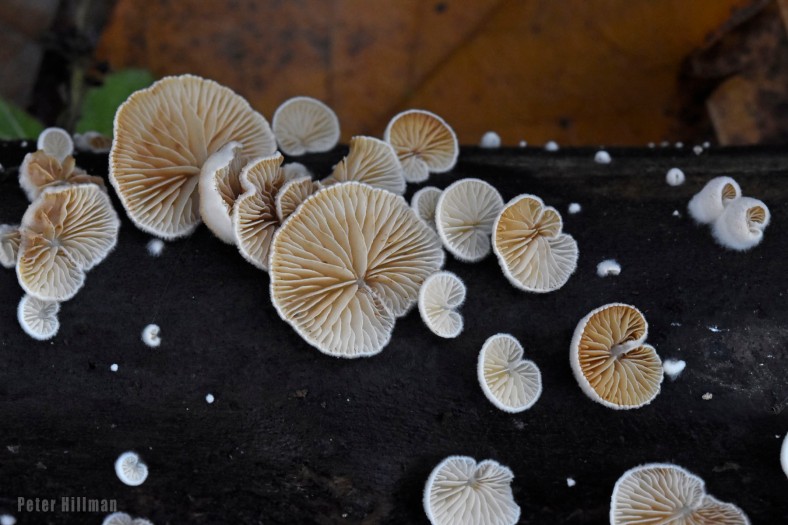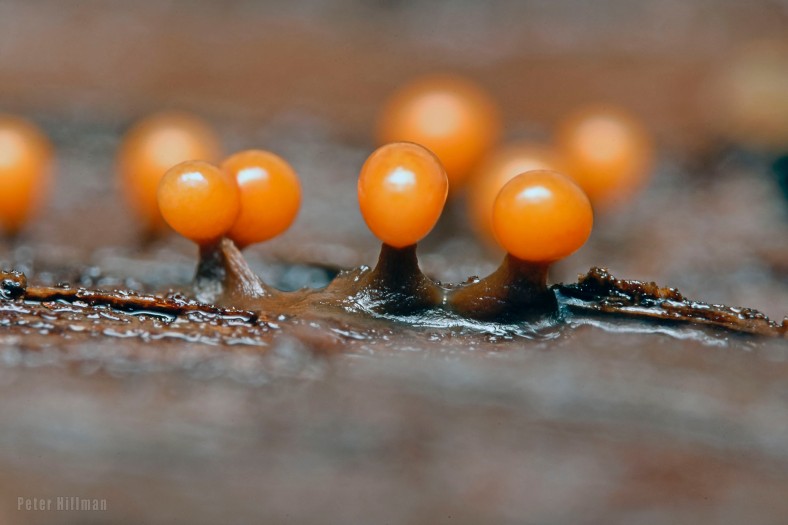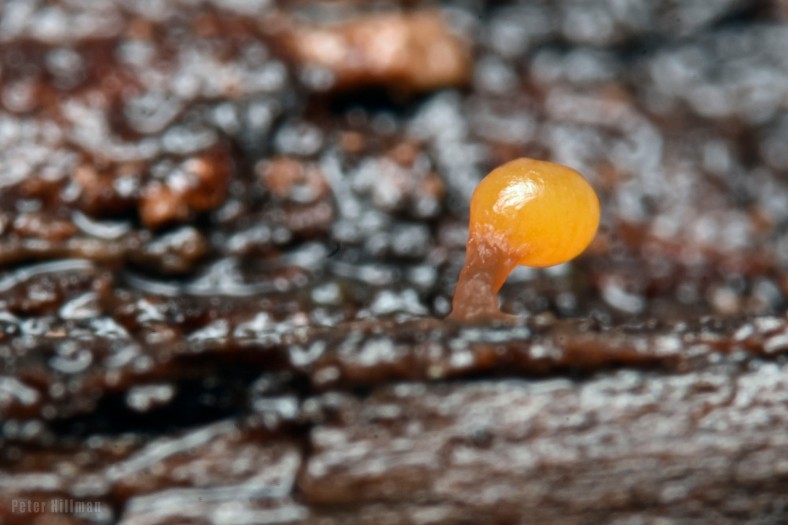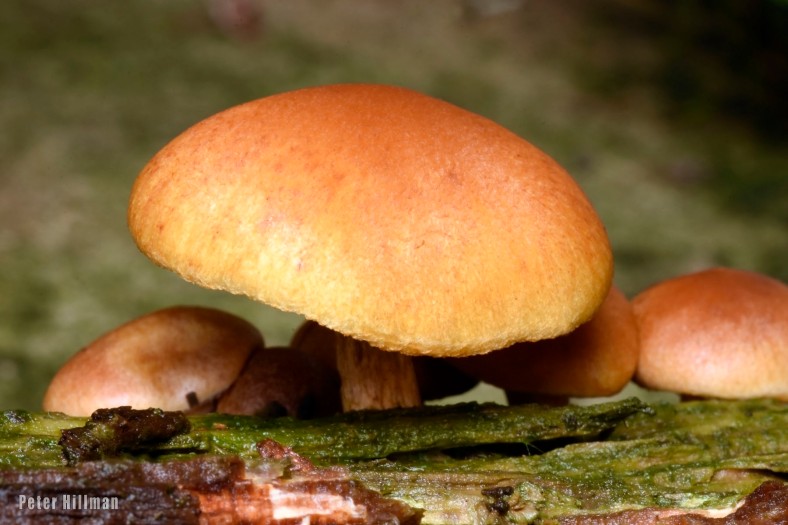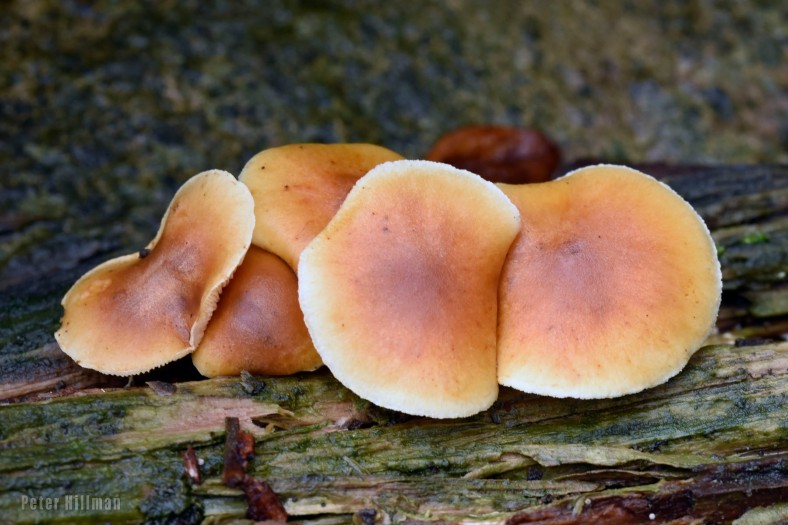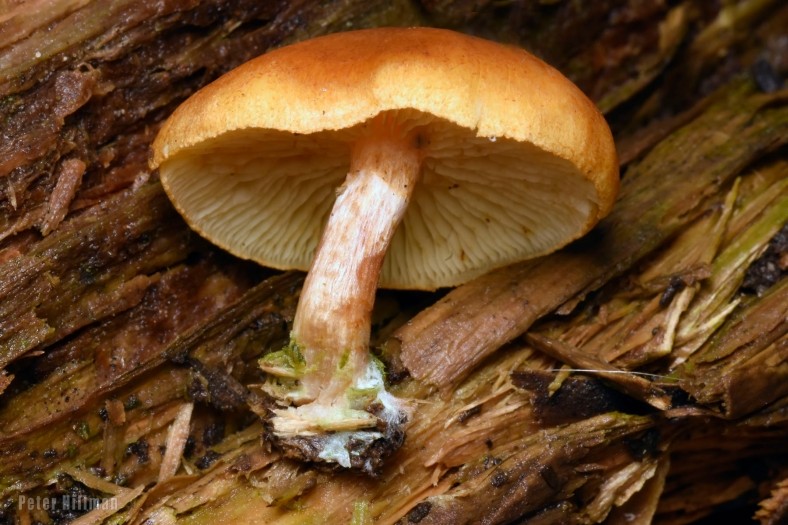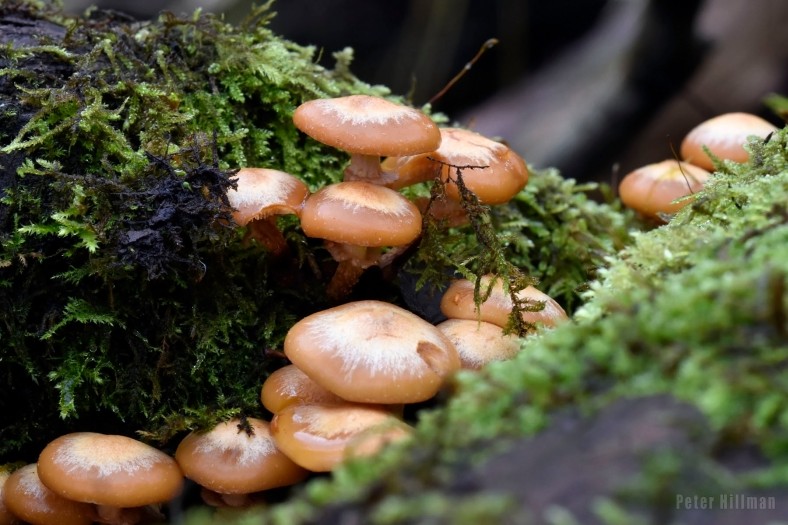Mallards (Anas platyrhynchos) are often taken for granted, but I hadn’t seen one for quite sometime. So when I came across several males and females on the local canal they were a pure delight to see as they paddled across the still waters with autumn reflections.
Tag: Nature
Sputnik
The Unknown
I came across this green, wavering cushion which is around 25 mm (1 in) in diameter in my birdbath. The water is crystal clear, but here was this thing quite happily growing there. I don’t know what it is. It might be an alga of some kind, or it could be be something from outer space which hitched a ride on a meteorite. Just hope I don’t get any ‘pod people’ growing in the flowerbeds …
Little One
All Kinds of Nuts Will Do
I want That
Kentish Snail
x3 images. Double click to enlarge.
The Kentish Snail (Monacha (Monacha) cantiana) is one of the commonest snails I notice on my walks along the edge of local woodland.
The shell has a lovely mottled appearance, which can vary. It is one that can be found in gardens, too, but I have not seen any here in my own.
Netted Slug
Pergamasus
x3 images. Double click to enlarge.
I just really like some names of species (or in this case the genus) so I used it as the title for this post.
Pergamasus are verocious predatory mites of soil and leaf-litter. And unfortunately not much more info is forthcoming.
Here are three individuals I discovered .. yep, under that plant pot.
One of The Smallest
x2 images. Double click to enlarge.
This is one of the smallest mites I have come across. I discovered it by simply lifting up a small plant pot. And once disturbed they never stay still for a second, so you have to try and focus and snap them on the move. In fact, I can only see them when they move.

I have manged to get them down to genus which Eupodes. They are one of the trombid mites (Order Trombidiformes), and are so small they are usually measured in µm (micrometres). Even with the Raynox conversion lens I have had to crop these images. They are around 0.2-0.5 mm in length. Quite distinctive mites with pinkish legs and antennae, and pinkish longitudinal dorsal stripes which varies in width. Seen all year round in soil, leaf litter and amongst mosses – or even sheltering under plant pots.
Say “Hi!” To Pudibunda
x5 images. Double click to enlarge.
About a month ago my neighbour calls round (he hit 80 this year and is as fit as a fiddle), and in the palm of his hand he had this little critter. He wondered what it was (he really has an interest in wildlife), and he thought it had fell from a bush he had cut back. I identified it as the larva for the moth the Pale Tussock (Calliteara pudibunda).
Later he came around again with another he had found on his apple tree. They feed on a large variety of deciduous trees and shrubs, and I was quite amazed to discover, like paint, they come in a variety colours, from yellow, green, to orange, pink and red. Don’t think they do any shades of blue though.
Below is the familar adult, which I have featured before, which is also quite an odd yet interesting character. Who would have thought that, that would turn into that, eh?
In case you was wondering, the caterpillars where put back safe and sound to continue their feedathon.
Over 250 Moths Over 16 Years
x16 photos. Double click to enlarge
It was when I purchased my first digital camera back in 2005, a Sony Cybershot compact camera, that my love for nature and the side of the natural world, that is not always often seen but is always there to be found, became rekindled. My interest in moths – ‘moth mania’ I call it – began from a young age when I used to stay up a little at night with my older brother Steve, looking out for these nocturnal insects. In those days I used to paint and draw them, especially those with vivid patterns and colours like the Garden Tiger, which has sadly declined over the years since, and I have not yet seen one here to photograph.

So since 2005, I have photographed over 250 (and still counting with lots of past images still to go through and positively identify) species of moth and have uploaded them to this site. 250 is small fraction of the 2,500 or more species of moth to be found throughout Britain. Not all are attracted to light. Some are attracted to feromones or sugar. Some are day-fying moths, and some are rare and localised to different areas of the country.
Oddly enough, in the year 2010 I apparently did not take one single moth photo, but a year later moth mania hit me again and I photographed over 150 different species of moth!

After buying different compact cameras over the years, it was in 2014 I purchased my first DSLR camera the Nikon D3200.
2016 was the year I upgraded my camera to the Nikon D7200 (which I still use to this day) , and in 2017 it was another year the moth mania got to me. It was a very bountiful year for moths.
The thing with moths is that they can be seen all year round, even during the winter months where most other insects are hibernating.
Spotlight on The Grey Dagger Acronicta psi
There are two very similar ‘dagger’ species in Britain, the Grey Dagger (Acronicta psi) and the Dark Dagger (Acronicta tridens). The adults cannot be accurately identified visually without genital dissection and microscopic scrutiny – but I don’t like to harm them so this adult would be recorded as an aggregate species Acronicta psi/tridens. The adult is readily attracted to light, and is seen in June and August in most habitats, including woodland, hedgerows and gardens. Sadly its numbers have significantly decreased in recent decades.
The caterpillar is quite an odd thing, and on first discovery I thought it had been parasitised! But the long and prounced ‘hump’ or fleshy projection is one of its defining characteristics and which visually separtes it from the Dark Dagger (Acronicta tridens) which has a shorter ‘hump’. A visually striking moth larva with long hairs and a yellow or white dorsal strip. The orange side patches offer quite a contrast in colouration. It feeds on a large range of broad-leaved trees and shrubs, and overwinters as a pupa amongst bark, in rotten wood or in the ground.
A Good Relationship
x3 images. Double click to enlarge.
Introducing the Ant Woodlouse Platyarthrus hoffmannseggii. Growing up to a length of 5 mm (1/4 in), it is blind and spends all of its life underground. It is always nearly found in association with ants within their nests where they have a good relationship. The woodlouse is tolerated and is not under any threat, most likely because it acts as a house keeper for the ants, feeding on their ant droppings hence keeping the nest clean.
A fairly slow-moving woodlouse, and the darkish stripe along the back is the contents of the gut showing through the cuticle. It is widespread across southern Britain, less so and becoming much rarer further north.
What Lies Under A Piece of Bark
x5 images. Double click to enlarge.
Lifting a piece of bark in a garden border, the last thing I expected to find was a delightful Smooth Newt (Lissotriton vulgaris).
It remained where it was, frozen to the spot. I hadn’t got my camera, so I gently placed the bark back and went into the house to get my equipment. Thankfully, when I got back and lifted the bark a second time, he was still there.
It is the first time I have seen a Smooth Newt here, in fact, surpisingly, the first time since I was a boy back home in the 1970s., so this was quite an exciting find for me.
I found him at the opposite end of the garden to where my pond is located, but after their spring mating sessions in ponds they live the rest of the year away from water, hiding under rocks and logs in woodland, hedgerows or gardens, venturing out only at night to hunt inveretbrates.
The Smooth Newt is one of three native species to be found in the UK, and it is the commonest and the most frequently encountered of them all.
Stag’s Horn Fungus
Mycoacia fuscoatra

This is an irregular resupinate fungus forming large spreading patches which is tightly attached to the substrate with waxy flesh which turns dark brown when dry and becomes brittle. I have shown close views in the first two images to show the fascinating structure of this fungi.
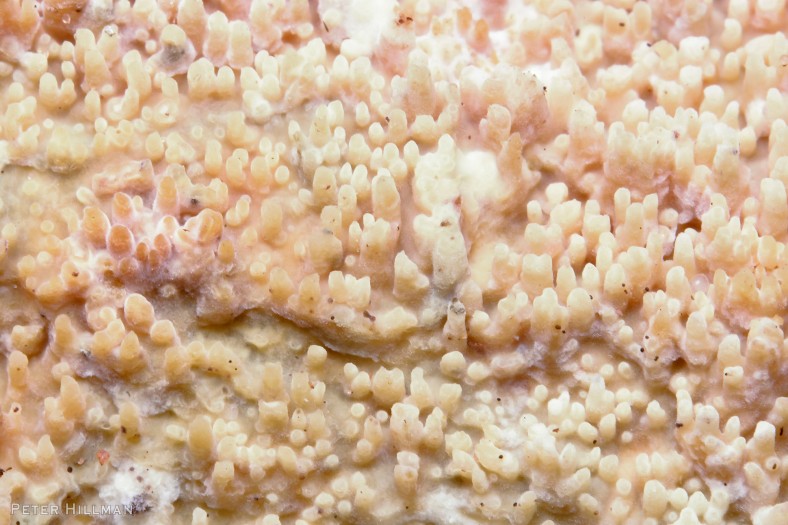
It is uncommon, and it is usually found on the the underside of fallen logs and branches of deciduous trees.

Clustered Bonnet #2

The Clustered Bonnet (Mycena inclinata) discovered on a rotting tree stump. Despite the potential lighting difficulties of photographing fungi … at least they don’t try and run away, and they don’t hardly move in the wind … I don’t really like to use flash on mushrooms as I much prefer the natural light. In manual mode, which is my preference, I may have to up the ISO a little which sometimes can risk noise creeping into the image, or drop down on the shutter speed, which may introduce camera shake hand held. Altering the aperture to suit the best situation also helps.Like all things in photography the challenge is to take control of the available light, and to find balance somewhere in between.
Yup … More Slime Forecast …

Not Ghostbusters slime … but Mycetozoa – slime moulds, more discovered this time in local woods. This species looks to be the same as in the previous post Trichia botrytis. Like all slime moulds, they creep across a surface very slowly devouring food until they run out, and when they run out they will release their spores.

These appear to be in the early stages of ripening. Each Sporocarp – the bright fruiting bodies you see – are around 5 mm (1/4 in) tall and 0.8 mm (3/64 in) in diameter, so they can be easily missed out in the field unless you keep an eye out for them. These were found on the underside of fallen bark on the ground.
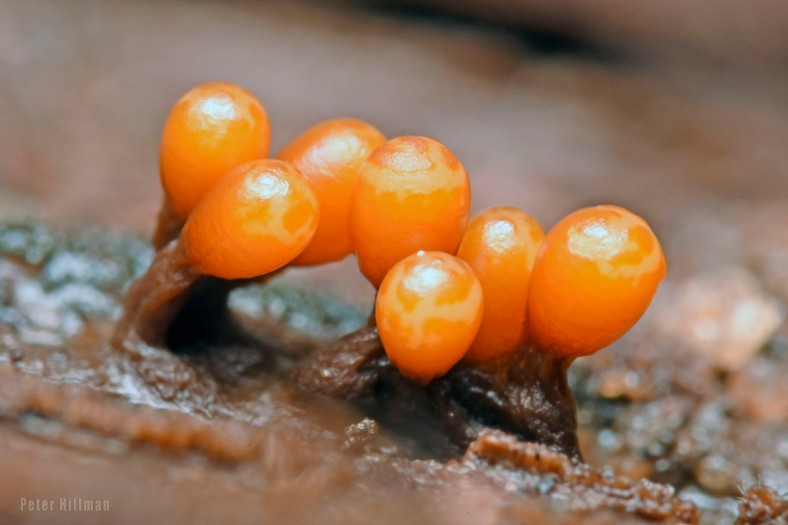
Variable Oysterling Crepidotus variabilis
More Slime
Shaggy Inkcap Coprinus comatus

Also called the Lawyer’s Wig, this can be quite a large and impressive mushroom with a tall cap. When it opens up the cap and white gills gradually blacken and dissolve into black ink from the edge upwards to release its spores. Eventually the cap will melt away completely until only the stem remains.
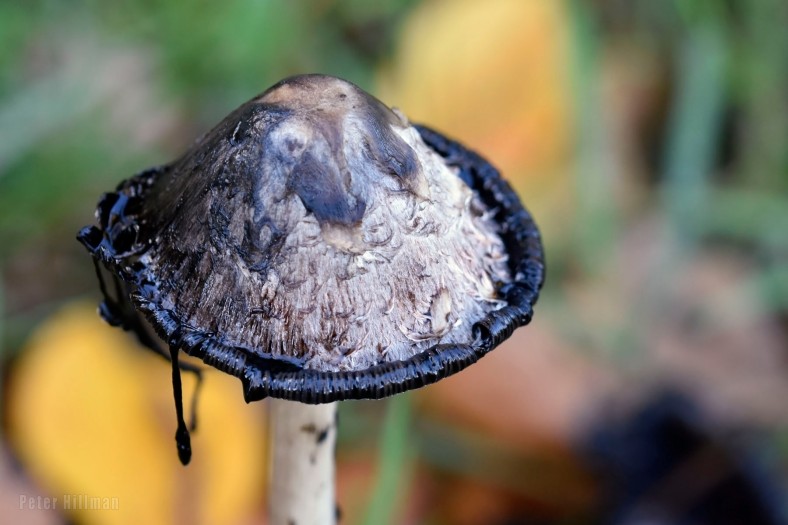
Seen late summer to autumn, it is found solitary or in groups on grass, soil, and waste areas, especially where the ground has been disturbed.

Common Rustgill Gymnopilus penetrans
Coral Slime Ceratiomyxa fruticulosa
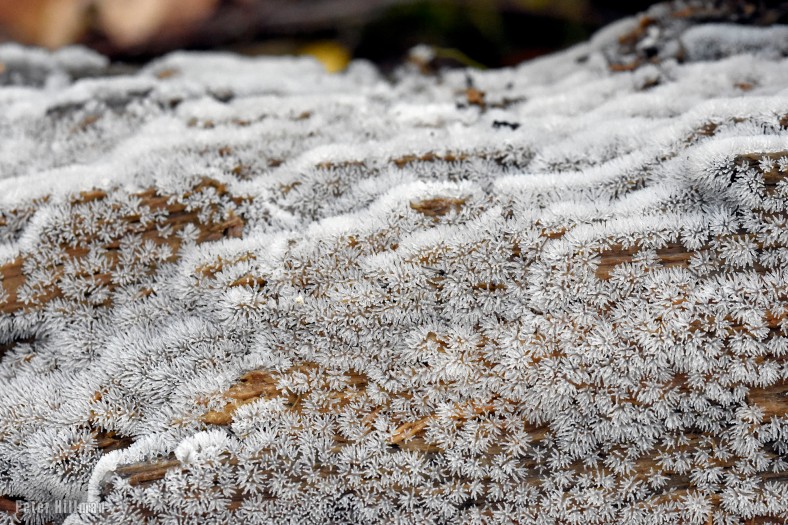
Whilst initially looking like ice crystals or coral, it is actually a slime mould – which is not a fungi but belongs to the kingdom Protozoa – single-celled organisms.
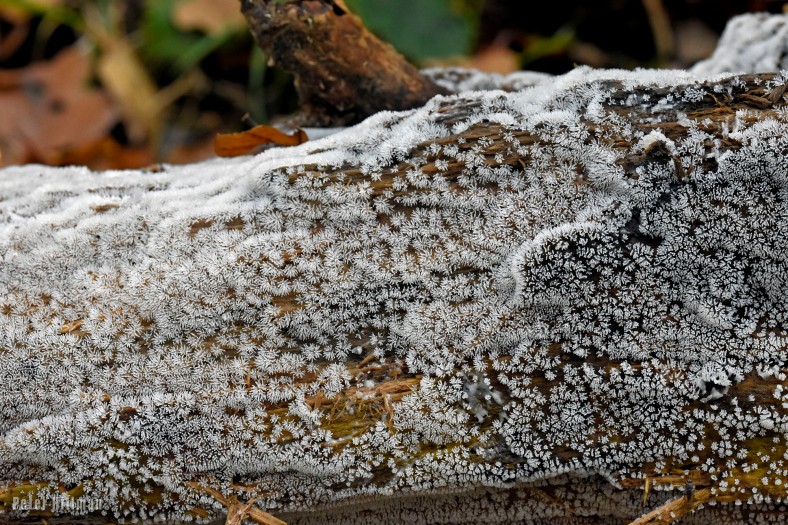
This colony was found covering a large area of a fallen and decaying tree trunk.
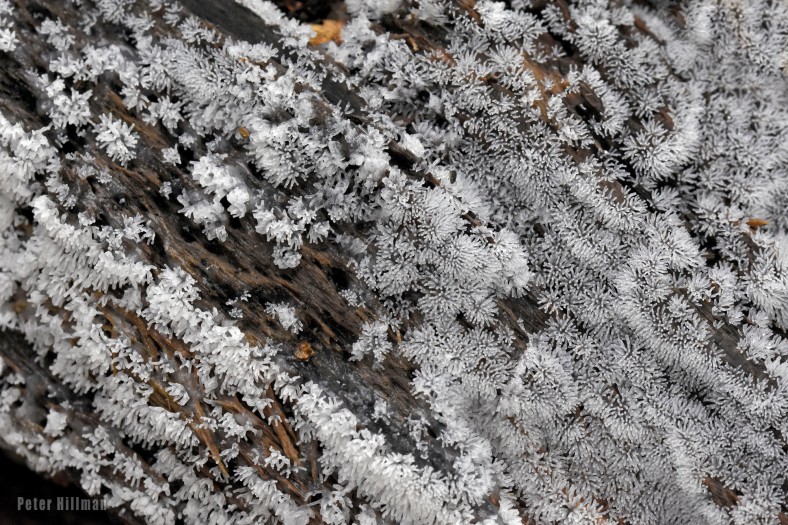
Although many slime mold species fruit on wood they do not form a penetrating and absorptive mass of hyphae in the wood substrate, but form structures called plasmodia which are naked (without cell walls) masses of protoplasm which can move and engulf particles of food in an amoeboid manner. Slime mold plasmodia creep about over the surfaces of materials, engulfing bacteria, spores of fungi and plants, protozoa, and particles of nonliving organic matter. At some point, plasmodia convert into spore-bearing structures.
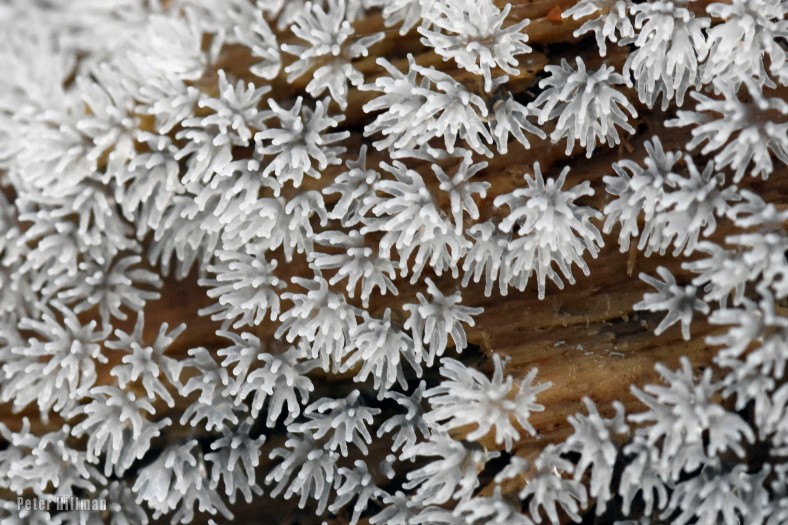
Sheathed Woodtuft Kuehneromyces mutabilis
Leiobunum sp. A

This caused some excitement the other day in the Harvestmen group I am a part of. Note that the ‘A’ at the end in the title is not a typo, but is there because scientists have yet to name it! It was first discovered in Europe in the Netherlands back in 2004, and then in the UK in Worksop, Nottinghamshire in 2009. There are a few scattered records as this non-native species extends its range. Despite rigorous searches, its point of origin in the world has yet to be determined.

It has extremely long legs, up to 100 mm (4 in) in length, and an unusual dark metallic green sheen of the dorsal surface, especially in the male. It can form large congregations on shaded areas of walls of buildings which can be counted in their hundreds. Associated with stony ground, and found around buildings like houses and on brownfield sites and old industrial land.

Cuter Than Cute – For A Bug

Dicyrtomina saundersi is its name, and not an insect (although previously considered to be) but a springtail. There is a kind of ‘spaceman’ like figure in the pattern towards the head, and a distinct dark barred patch towards the rear of the abdomen which helps separate it from similar species.

It looked directly up at me here … and appears to have kinda smiled, or may be it was a grimace?

This is a young one, a juvenile, and a female with the pale cheeks. It is around 2 mm (5/64 in) long.

Seen all year round under stones and bark in various habitats. A native species, and fairly common and widespread throughout Britain.

You can double-click images to enlarge once passed the advertising landing page.
The Colours of Autumn
Common Striped Woodlouse

Philoscia muscorum has a dark stripe along the centre of its back. One of the ‘famous 5’ very common British species of woodlouse most likely to be seen.

Seen all year round, it forages for dead organic matter on which it feeds during the cover of night, hiding under stones, bark or logs during the day.

Woodlice can be quite a challenge to photo, not just because of their small size, but because they generally run off and hide again when disturbed. The camera flash can be problematic, too, for it tends to bounce off the shiny surface of the exoskeleton expressing ugly highlights. A diffuser helps, but control of the light can still be a challenge. To add, narrowing the aperture to around f/36 to get as much detail as possible means flash is essential. You are also outside of the ‘sweet spot’ for sharpness, but all depends on your lens and camera, too. And without a tripod, a steady hand is needed, so bracing on ‘anything’ using ‘everything’ is key.

Equipment: Nikon D7200 with Sigma 105 mm macro lens and Raynox 250 convertor lens. Nikon Speedlight with plastic direct fitting diffuser and fabric diffuser on lens. Hand held. Settings: f/36. 1/160 sec. ISO-320. A little post-processing applied.
Autumn Is A Time For Harvestmen
Odiellus spinosus – Its been a good year for harvestmen, and I have seen quite a few different species around, but I haven’t seen this one in the garden for some years now. This one has 3 distinct horns of similar length which, together, is called a ‘trident’, and has a dark oulined ‘saddle’ on its abdomen which ends short, combined these are diagnostic features. Notably it has short to medium legs compared to other species of harvestmen. A fierce hunter which prays on other invertebrates, and is found around human habitation like outbuidlings, gardens and houses.



Hitching A Ride
A blob of Red Jelly
Well not quite – it is an Oribatid mite found in soil under a clay flower pot. They are also called Beetle Mites or Moss Mites. The order Oribatida has species which range from 0.2 mm long to 1.4 mm (1/128 in to around 1/16 in) long … and this is somewhere inbetween.
These very small mites occur in soil and humus, and occasionally on tree trunks and foliage. They are mostly harmless and play a role in breaking down organic matter. Amongst the most numerous soil arthropods, these mites are important in the development of soil fertility.
This one is so well polished you can almost see my reflection in it.



999 Species
I have now recorded 999 species on this website, from plants to animals, fungi and even a cyanobacterium. I have stopped short of making this post ‘1000’ as the 999th species convinced me to use it as a marker milestone. Not surprising it happens to be an invertebrate, an arthropod, and an insect at that.
Attactagenus plumbeus is a member of the Curculionidae family which make up the weevils. What is so special about this species apart from its own uniqueness is is scarcity. Data gleamed from the NBN Atlas shows only 96 records between 1990 and 2020, and 151 records in total from 1890. The British nature conservation status is Nationally Notable B (species found in between 31 and 100 hectads – 10 km x 10 km square), making it nationally scarce. There are only 4 records for 2020, and 1 of these is mine. Native to Britain, not surprisingly it is very localised with a few scattered records across England and Wales, except the south-east of England, and is absent from Scotland and Ireland. It feeds on plants from the Fabaceae family, including species of vetch and broom, and is found in fields and meadows where the host plants can be found.


Edwardsiana crataegi
Nigma walckenaeri
Battle of The Beasts
Rosemary Beetle
Chrysolina americana
This attractive beetle is from a family called Chrysomelidae the leaf beetles. It is a fairly recent newomer to Britain, introduced in the 1990s and now established in most of England and Wales, and still expanding its range. It is considered a pest of Rosemary, Lavender, Sage, Thyme and similar plants, both the adult and the larva feeding on the foliage. It is the first time I have seen it here, and will have to see if it is a ‘pest’ as such. It is 6.7-8 mm long. The adults can be seen throughout the year, even during winter.


The Cheeky One
3 Faces of The Candy-striped Spider
Enoplognatha ovata – This spider comes in 3 flavors … well not quite flavours but forms or ‘morphs’. Not quite faces either, but opisthosomas or abdomens. Form lineata is creamy-yellow with black dots, form redimita is also creamy-yellow but with two broad red stripes and lines of black dots, and finally form ovata has a single broad red band and black spots. Sometimes the black dots may be abscent in all forms. After mating the female folds a leaf, usually bramble or nettle, and deposits a single egg sac inside and guards it. In my green recyling bin, where I tend to find them, they deposit the egg sac in a corner. With the lid down I suppose it offers some protection.



Riding The Storm
White-lipped Snail (Cepaea hortensis) – Storm Francis is battering us here in the UK, and after the rain had stopped and with the sun coming out briefly, I popped outside and came across this little one on the side of my planter. Not everyones favourite, I know, but they have a beauty of their very own in colour and form. You do have to zoom in to see what I mean. I believe this one was eating algae or lichen.





